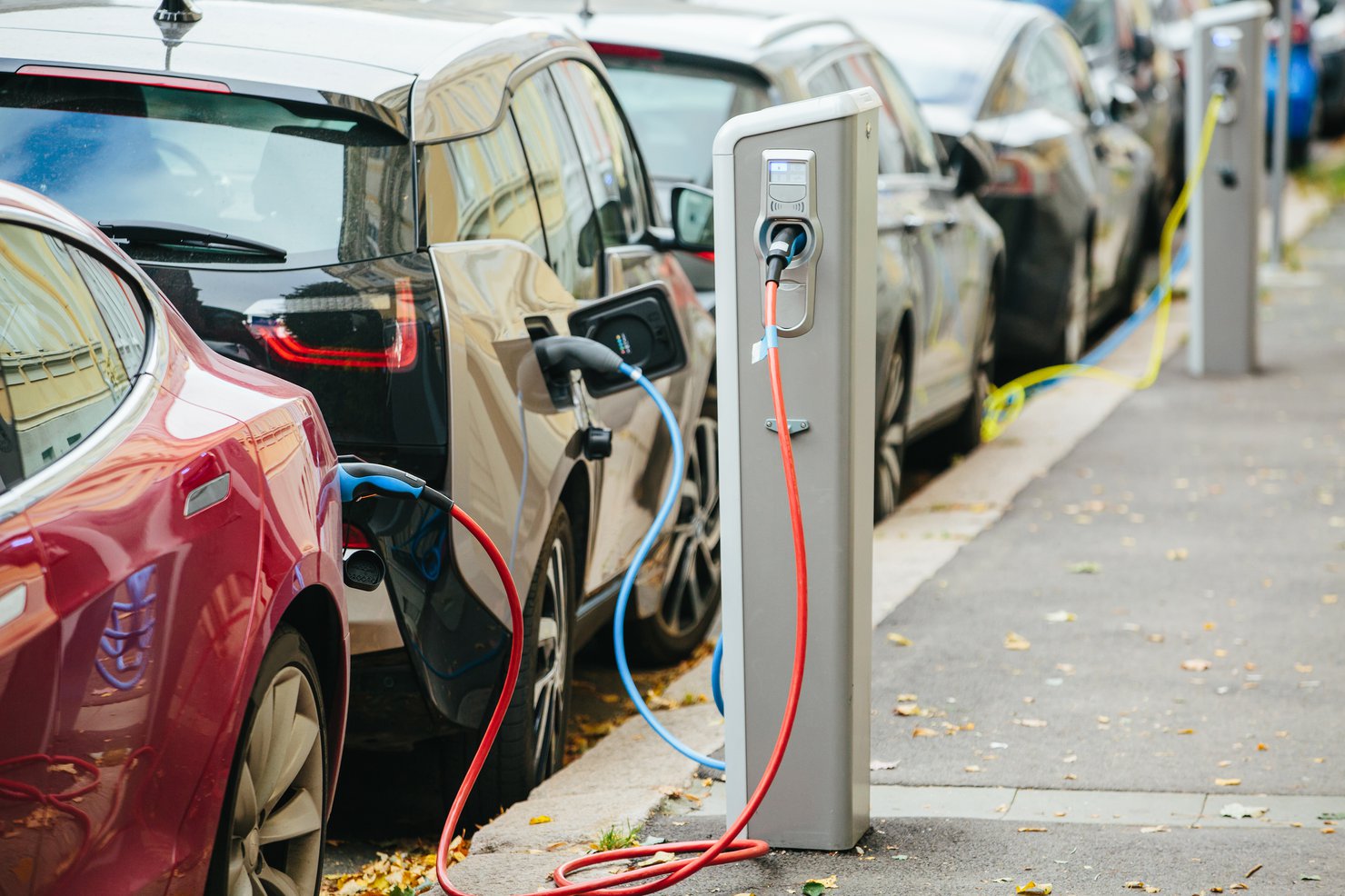No traffic is good traffic, but encouraging the use of low- or no-emissions vehicles, such as electric vehicles, can help reduce pollution on the roads. Resources for the Future Fellow Benjamin Leard draws from a recent research paper to discuss how to get more consumers in the driver’s seat of electric vehicles.

Resources magazine: How can the government design the most compelling policies and incentives to encourage the use of electric vehicles by consumers?
Benjamin Leard: One of the best ways to encourage people to do something is to subsidize the behavior. A subsidy lowers the effective purchase price, which is the most important feature of a product. One of the big reasons we see low sales of electric vehicles is their high up-front purchase price.
The way that the current incentive works—the federal subsidy—is it’s a federal tax credit. When you buy an electric vehicle, or even a plug-in hybrid vehicle, you get a credit from the government when you file your taxes. The current subsidy amount for a fully electric vehicle is $7,500. For other types of vehicles, such as plug-in hybrids, the subsidy varies according to the range of the vehicle: the smaller the range of the hybrid, the lower the subsidy. The subsidy is a direct way to deal with the high purchase price of electric vehicles by reducing the effective purchase price. Instead of paying the full $50,000 for an electric vehicle, let’s say, a consumer can pay the full price minus the level of the subsidy.
Studies, including the paper I published recently with colleagues, have found that consumers are sensitive to changes in the subsidy level, and to the purchase price itself. Similar to other papers looking at electric vehicle subsidies, we find that consumers respond pretty sharply to changes in the purchase price. The results suggest that, to really encourage people to buy more of these vehicles, we can just lower the effective purchase price. But subsidies aren’t the only instruments that you can use to encourage the adoption of this new technology. You really want to think about what the barriers are to people buying the vehicles. The purchase price is one attribute. And the way the vehicle looks. Is it small? Is it large? How many people does it seat?
Electric vehicles are special. They have certain limitations that gasoline vehicles don’t, such as driving-range limitations—“range anxiety” is the terminology that is used. A typical gasoline vehicle has a range of about 500 miles on a full tank of gas, whereas even the best electric vehicle has a range of only 300 miles before having to recharge. That’s a big difference, even for the best ones. And for some plug-in hybrids, the range can be just 20 or 40 miles.

Recent papers have found that it’s actually pretty cost effective to incentivize the construction or installation of public charging stations. The United States has about 150,000 gasoline stations, but only about 20,000 public electric vehicle charging stations—really far behind the infrastructure that we see for gasoline vehicles. So another way to incentivize people to buy these vehicles is to install more charging stations. It’s not as direct as modifying the purchase price through subsidies. But it is certainly something that a lot of consumers care about when they make this purchase. They want to know that if they drive their vehicle, and it runs out of electricity, they can recharge it pretty easily.
What does a good subsidy program look like?
A policymaker wants to design a subsidy that’s cost effective; in other words, they want to get the most additional sales of electric vehicles per dollar spent. Otherwise, you’re just giving people money when they would have bought the car, anyway. This is a common problem and criticism of subsidies. To maximize their cost effectiveness, we need to know which groups of people are on the margin between buying and not buying.
In our paper, we do a very simple analysis to identify the people at that margin: If we differentiate the subsidy by income, how would that affect the power of the subsidy? We find that targeting this subsidy at lower-income households—in essence, giving more of the subsidy to lower-income households—is a more cost-effective way to use the subsidy.
Lower-income consumers typically are much more price sensitive than higher-income households. If you make a lot of money, a tax credit of $7,500 on a $100,000 high-end electric vehicle is not going to have that much of an impact on your decision—it’ll still cost you $92,000. Whereas if the same subsidy were applied to a $40,000 car—which is more likely to be bought by someone on the lower-income distribution of new car buyers—lowering the purchase price to about $32,000, then the consumer is going to be much more responsive to that incentive.
Do we actually see in practice this kind of incentive that targets lower-income consumers, with the aim of getting a bigger bang for the subsidy buck? How much is the idea catching on?
California is the only one that we’re aware of. The federal subsidy does not differentiate among consumers; rather, only according to the type of vehicle. Because California is the only state that awards subsidies by income, we used California’s program as a model for addressing the question of whether the subsidies could be more efficient. We found that yes, subsidies could do a better job.
Given the results of your study, what would you suggest for the dual aims of both getting as many electric vehicles as possible on American roads and designing the most efficient subsidy program?
I think, as a first pass, just following what California has been doing. If you’re really interested in increasing the cost effectiveness—which policymakers should be, because these are tax dollars in use—then we really want to maximize the returns on those dollars. We don’t want them just to go to people who would have bought the vehicles, anyway.
When it comes to the market and consumers, would you say that consumers can speak with their money? Can they have an effect on manufacturers and on the environment by withholding or spending their dollars?
Yes, certainly in the aggregate, consumers are ultimately the ones that will dictate the types of vehicles that are brought to the marketplace.
The caveat is that other regulations in play also influence what’s brought to the marketplace. A major policy at the federal level is the Corporate Average Fuel Economy (CAFE) standards and greenhouse gas standards for light-duty vehicles. This policy basically is forcing more fuel economy into the market.
Suppose I as a consumer really want to improve air quality and lower my carbon footprint. I’ll go buy an electric vehicle. But then for every electric vehicle sold, the company actually gets a credit, which they can then sell to other manufacturers that are under-compliant and less fuel efficient than the federal requirements. We’ve found that Tesla does this every year. They sell their vehicles, they earn credits because all their vehicles are emissions free, and they sell the credits to under-compliant, less fuel-efficient companies. As a result, you could say that a consumer who buys one electric vehicle basically allows the existence of one under-compliant vehicle—their purchase of an electric vehicle is basically allowing another company to sell a fuel-inefficient SUV.

So you, as a consumer, have to keep in mind what’s really driving reductions in greenhouse gases. The best you and I can do to ensure that emissions decrease in the transportation sector actually would be to push for more stringent, binding federal standards. That’s really what’s been driving the whole increase in fuel economy that we’ve been seeing recently.
Economists, when thinking about measuring the costs of a policy, want to know not only the fuel cost savings, but also what people are sacrificing for the higher fuel efficiency. How much do consumers value vehicle performance, such as how fast the vehicle accelerates from zero to 65 miles per hour, and how much performance are consumers willing to sacrifice for higher fuel efficiency? We find that consumers do value performance a lot, and so they sacrifice quite a lot as a result of federal fuel-efficiency standards.
But it turns out that some electric vehicles actually have very good performance. If you’ve ever driven a Tesla, you know how crazy fast they accelerate. That’s a plus for people adopting electric vehicles.
And maybe that gain in performance might justify the higher cost for those high-end electric vehicles.
The cost is still too high. But eventually, once we get closer to price parity, I think a lot of people will switch to get the benefits from electric vehicles.






